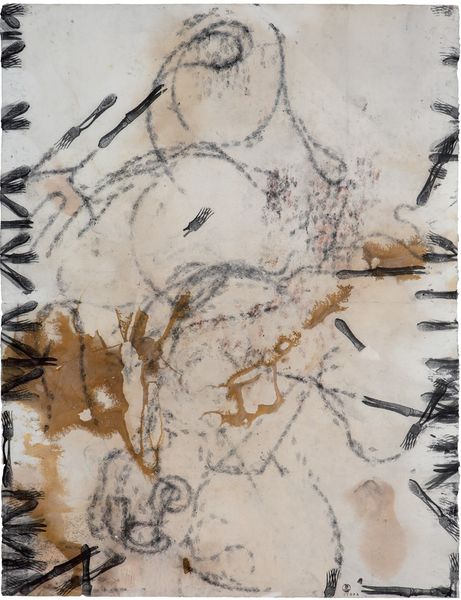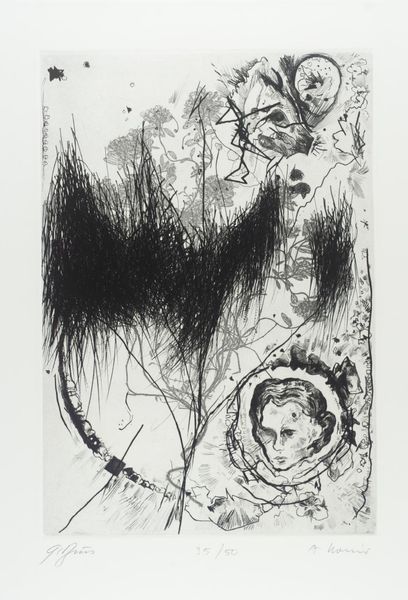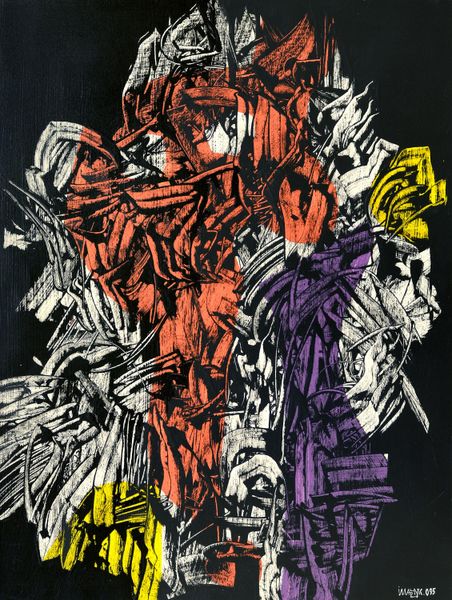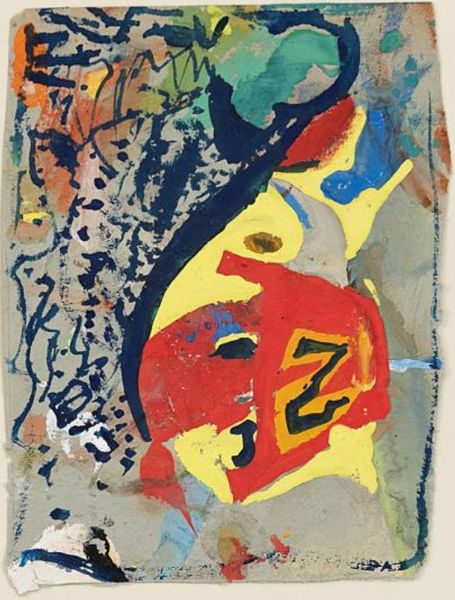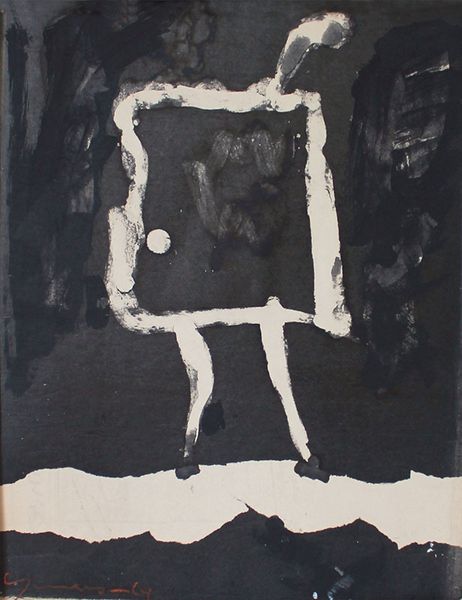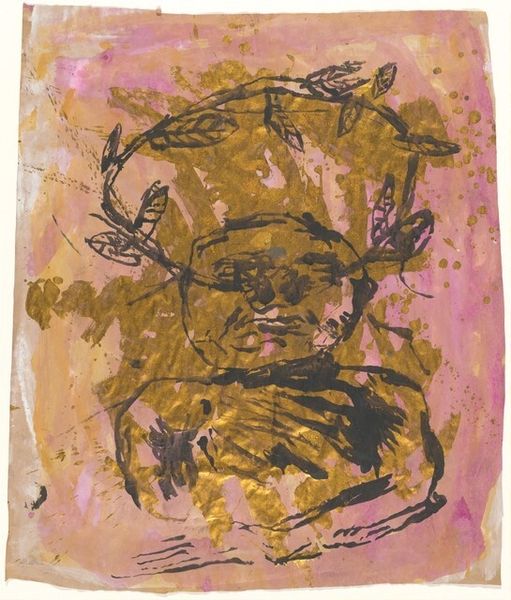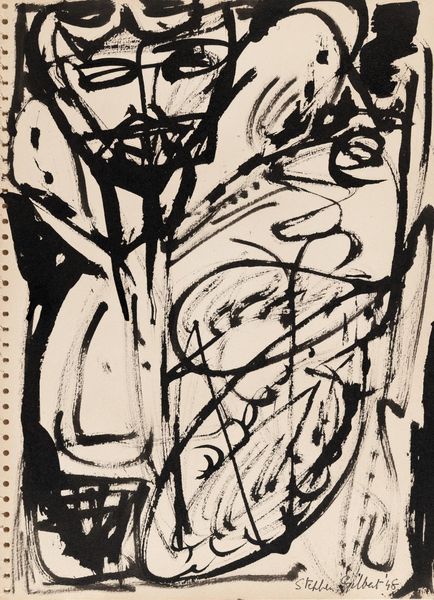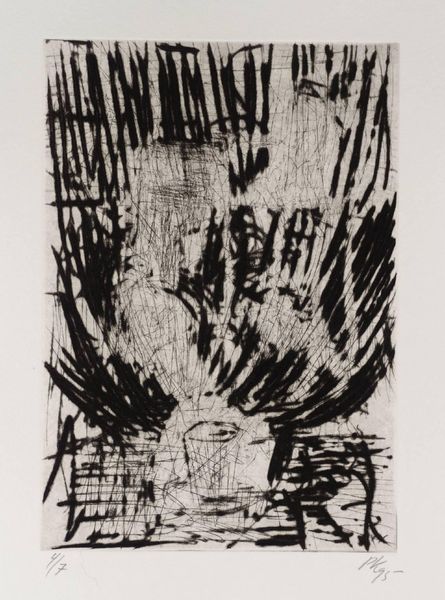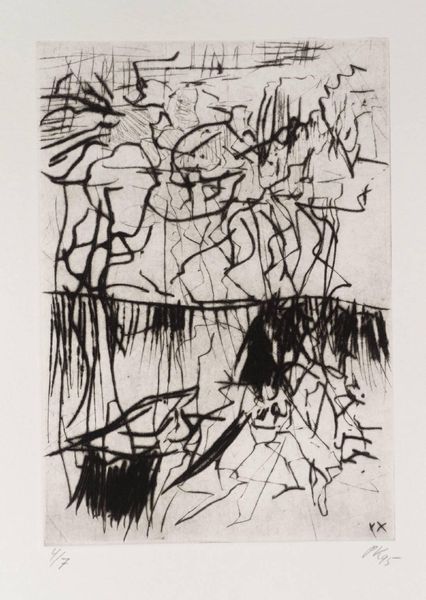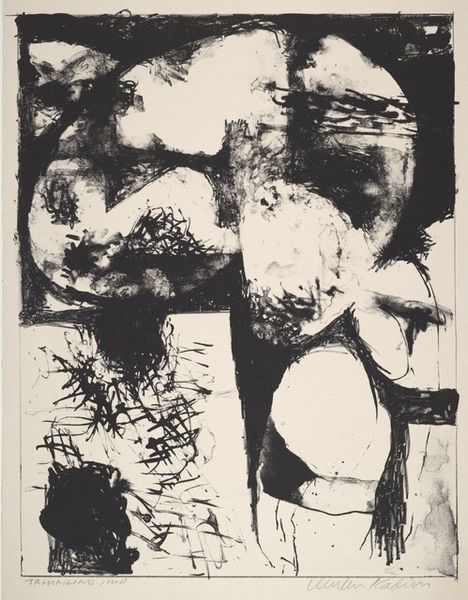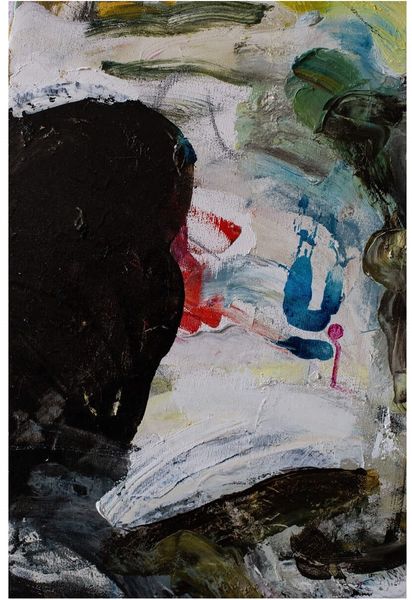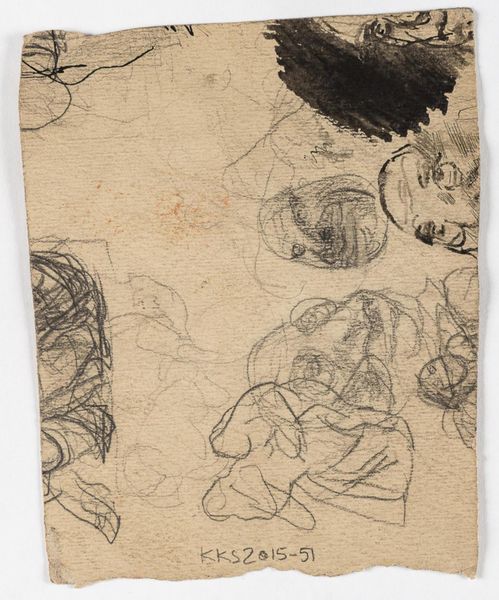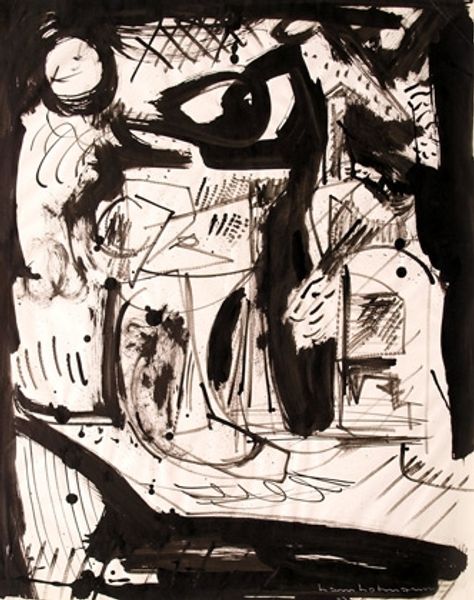
Robinson Crusoe or unity 2013
0:00
0:00
alfredfreddykrupa
Museum of Modern Art (MoMA), New York City, NY, US
drawing, paper, ink, pen
#
drawing
#
pen drawing
#
figuration
#
paper
#
ink
#
pen
#
realism
Dimensions: 21 x 15 cm
Copyright: Creative Commons NonCommercial
Editor: Here we have Alfred Freddy Krupa's 2013 pen and ink drawing, "Robinson Crusoe or unity." It's on paper and includes what look like actual leaves. I'm struck by the stark contrasts and how the face seems both prominent and obscured by the lines. What do you see in this piece, focusing on its formal elements? Curator: Observe how the artist employs line, not merely to define form but to create dynamic interplay. The density and direction of the lines around the face contribute to a sense of unease, a visual dissonance. Consider the rough edges of the paper. How does this inform our perception of the work's materiality? Editor: I hadn't thought about the paper itself, but now that you mention it, its texture and torn edges really stand out. It's almost like the drawing is emerging from a fragmented reality. Does the addition of leaves also play into that tension, by contrasting what’s drawn versus what’s physically there? Curator: Precisely. These elements challenge traditional notions of representation, moving towards a more abstract and conceptual articulation. The leaves introduce a tactile dimension, a trace of the real world juxtaposed with the abstract world. Editor: It’s amazing how simply using lines and texture, instead of shading or realistic color, can be so expressive. The title adds another layer, and invites other ideas, such as whether the drawing conveys feelings of solitude and self-reliance, like in Defoe's novel. It looks like a meditation on those concepts through art. Curator: A very insightful reflection on the artwork. It suggests not a simple depiction, but an analysis of form and content within defined boundaries, allowing the viewer to draw personal meaning from it. Editor: Looking closely at its elements helps in understanding the art. Thanks! Curator: Agreed; by analyzing form, we can also recognize intent.
Comments
No comments
Be the first to comment and join the conversation on the ultimate creative platform.
